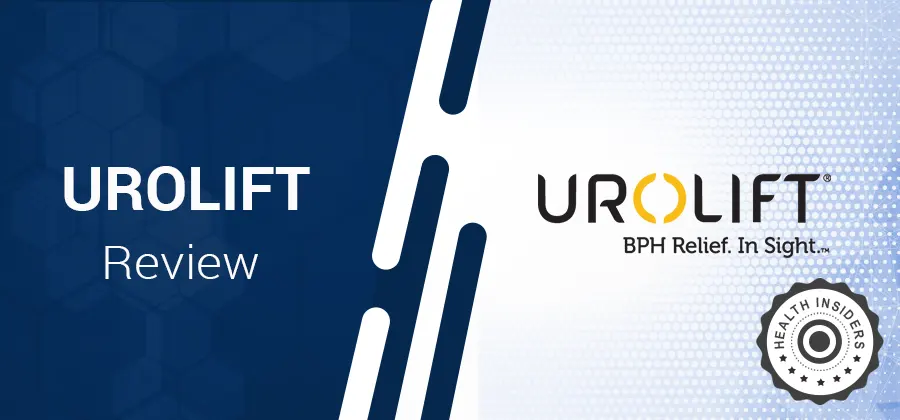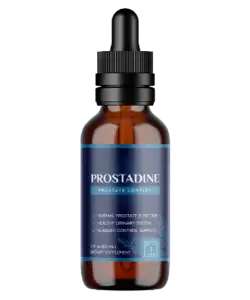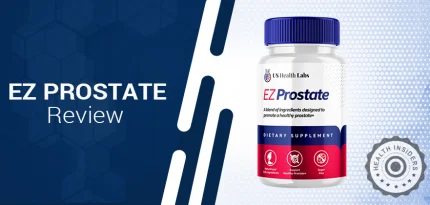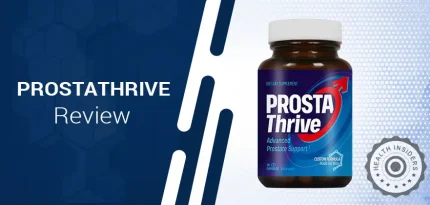Highlights
- UroLift is a non-surgical treatment for BPH (enlarged prostate) aimed at relieving urinary symptoms.
- Offers faster recovery and fewer sexual side effects than traditional surgery.
- Risks include discomfort, temporary bleeding, or urinary urgency post-procedure.
Overview
Benign Prostatic Hyperplasia (BPH) is an extremely frustrating condition in men since it is associated with unpleasant symptoms such as frequent urination, weak urinary flow, and sleepless nights. Such symptoms may interfere with ordinary functioning, and one cannot feel normal and comfortable.
Introducing the UroLift System which can be of help. The UroLift System is an alternative to the conventional BPH therapies which offer a less invasive treatment to deliver symptom relief.
Yet, what are the realistic expectations for the UroLift System in men, and is it the best option for them? This article will examine the details of the UroLift System and provide a comprehensive review.

UroLift Review – Health Insiders Images
What Is UroLift?
UroLift is marketed as a treatment for an enlarged prostate which is called BPH, Benign Prostatic Hyperplasia. BPH is common and affects 40 million American men. Approximately 40% of men in their fifties and 70% of men in their sixties have BPH. BPH greatly affects men’s quality of life.
According to the manufacturers, the UroLift System breaks the cycle of medications and relieves the symptoms of an enlarged prostate.
It has been suggested that BPH medication causes sexual dysfunction, dizziness, and fatigue. Therefore, with UroLift you can enjoy a normal life. This treatment provides a simple solution, helping men get back to their daily activities with a quick recovery.
UroLift – Quick Facts & Specs

- Form:Outpatient Procedure
- Benefit:Relieves BPH symptoms, improves urine flow
- Brand:UroLift
- Price:Varies by physician and location
- Used ForEnlarged prostate (BPH) symptoms
- Recommended DosageOne-time treatment session
Pros and Cons of UroLift
- Provides rapid relief and recovery without long downtime.
- No cutting, heating, or removal of prostate tissue is required.
- Not appropriate for men with very large prostates.
- Only provides symptom relief, not a permanent solution.
- Pain or burning with urination.
- Blood in the urine.
- Pelvic pain.
- Availability depends on trained doctors.
- Coverage depends on medical criteria and insurance plans.
How Does UroLift Work?
The UroLift System is effective in treating BPH by offering the least invasive solution in terms of treatment. The process is carried out in a doctor’s office where tiny implants are applied to alleviate the blockage brought by a large prostate.
The UroLift device is inserted into the urethra to reach the enlarged prostate. The UroLift Implants raise the enlarged prostate tissue and keep it raised, thereby enlarging the opening of the urinary tube, hence leading to an improvement in the ability to receive improved urine flow and providing relief from lower urinary tract symptoms (LUTS).[1]
This approach successfully alleviates the BPH symptoms without cutting, heating, and/or eliminating the prostate tissue, which makes this a faster and effective alternative to surgery in many men.
Benefits of UroLift
Rapid Relief and Recovery: The UroLift System offers fast symptom relief, with many patients feeling better within days. This quick improvement allows men to get back to their regular activities without prolonged downtime.
Minimally Invasive: UroLift requires no cutting or removal of prostate tissue, making it a less invasive option compared to traditional surgeries. This results in a quicker, easier recovery with fewer complications.
No Sexual Dysfunction: Unlike other BPH treatments, UroLift does not cause sexual dysfunction, ensuring that men can maintain normal sexual health. This benefit sets it apart from other procedures that often lead to side effects like erectile dysfunction.
UroLift Side Effects
Though the UroLift procedure is generally safe, some individuals may experience certain side effects, such as:
Pain or Burning with Urination: Some patients may feel discomfort or a burning sensation while urinating, which usually resolves over time.
Blood in the Urine: Temporary blood in the urine can occur post-procedure, but it typically clears up after a short period.
Pelvic Pain: Mild pelvic discomfort may be felt by some patients, often subsiding after a few days.
Urgent Need to Urinate: Some users might experience an increased urgency to urinate, which should decrease as the body heals.
Inability to Control the Urge to Urinate: Occasional difficulty controlling the urge to urinate may occur, but it generally improves with time.
If any of these side effects occur, it is advised to stop use and consult a healthcare provider for further guidance.
Is UroLift Safe to Use?
UroLift treatment is relatively safe but some risks are associated with it, just as with any other medical procedure. The common side effects include pain or burning sensation on passing urine, hematuria (blood presence in the urine), pelvic pain, and urgency to pass urine.
There are exceptional situations when the complication of bleeding or infection can take place, causing more severe complications. These risks should be discussed with a healthcare provider to understand whether UroLift is a suitable treatment option.
UroLift Patient Reviews & Results
Disappointing Results, Not Worth It
The procedure didn’t work as expected. While I did see some improvement, the symptoms didn’t fully go away, and recovery took longer than anticipated. I was hoping for better results. – John Carter
Expected More from the Treatment
After the UroLift procedure, I didn’t experience the immediate relief I was promised. It’s been a few weeks, and I’m still dealing with some symptoms. I expected quicker results from the treatment. – David Hargrove
Decent Results, but Took Time
The UroLift procedure helped alleviate some of my symptoms, but it took longer to see results than I expected. Overall, it has been a good option, though there were some minor discomforts during recovery. – Michael Thomas
Where can you have this procedure performed?
You can buy UroLift directly on Amazon. Prices may vary on different third-party platforms, so it’s recommended to check and compare before purchasing.
Final Verdict
Although the UroLift System is a less invasive management of BPH and many men get relief from symptoms with this form of treatment, this may not necessarily be the best answer for all men with BPH. Other users complain of delayed effects and side effects such as pelvic pain or blood in the urine.
The UroLift procedure is not likely to be used on men with extremely large prostate glands or those with some forms of problems with the prostate.
Nevertheless, it is non-destructive and non-invasive and does not involve cutting or the removal of prostate tissue. One should talk to a healthcare specialist and understand whether UroLift is a proper option for them.
Frequently Asked Questions
Q: Is it worth investing in UroLift?
A: UroLift may be worth considering if you are looking for a minimally invasive solution to BPH with quick recovery and no risk of sexual dysfunction. However, its effectiveness may vary based on individual cases.
Q: What are the pros and cons of the UroLift procedure?
A: This procedure offers rapid symptom relief, is minimally invasive, and avoids sexual dysfunction with a quick recovery. However, it may not be suitable for very large prostates and can cause temporary pain, blood in the urine, or urgency to urinate.
Q: What are the outcomes of patients when treated with UroLift for Benign Prostatic Hyperplasia (BPH)?
A: Patients often experience significant symptom relief, with many reporting improvement in urine flow and a reduction in nighttime urination, though results can vary and some may require additional treatments.
Q: How long does it take to recover after the UroLift procedure?
A: Recovery time is relatively quick, with many patients noticing improvements within days and resuming normal activities within a week or two.
Q: Are there any risks associated with the UroLift procedure?
A: While generally safe, the UroLift procedure may cause temporary side effects like pain or burning during urination, blood in the urine, and pelvic discomfort.
Q: What Are the Symptoms of BPH?
A: BPH symptoms include a weak or interrupted urine stream, trouble starting urination, dribbling, frequent urination, and feeling like the bladder isn’t empty, often disrupting sleep and daily life.
Q: How long does the UroLift treatment last?
A: UroLift provides long-lasting relief, with many patients experiencing symptom improvement for several years, though individual results may vary. Follow-up care may be needed for some.
Q: How Do BPH Symptoms Differ From Prostate Cancer Symptoms?
A: BPH mainly causes urinary issues like a weak stream, frequent urination, and incomplete bladder emptying. Prostate cancer often has no early symptoms but can include blood in urine, erectile dysfunction, and unexplained pain or weight loss.
Q: How Does the UroLift Procedure Work?
A: The UroLift procedure uses tiny implants to lift and hold enlarged prostate tissue away from the urethra, improving urine flow. It’s minimally invasive, with no cuts or tissue removal, and offers quick recovery.
1 Sources
Health Insiders relies on peer-reviewed studies, academic research institutions, and medical associations. We avoid using tertiary references. You can learn more about how we ensure our content is accurate and current by reading our editorial policy.
[1] The UroLift implant: mechanism behind rapid and durable relief from prostatic obstruction: https://pmc.ncbi.nlm.nih.gov/articles/PMC9018420/






 Diana Young, LD/N, ORDM, GC-C
Diana Young, LD/N, ORDM, GC-C


 This article changed my life!
This article changed my life! This article was informative.
This article was informative. I have a medical question.
I have a medical question. Ask a Question
Ask a Question
 This article contains incorrect information.
This article contains incorrect information. This article doesn’t have the information I’m looking for.
This article doesn’t have the information I’m looking for.
Results Were Disappointing, Not Worth It
Although UroLift provided some symptom relief, it didn’t eliminate my issues entirely. The procedure took longer than expected, and I still experience discomfort and urgency.
Results didn’t fully meet expectations
The UroLift treatment eased certain symptoms, yet the overall improvement wasn’t as significant as I hoped. Side effects like urgency persisted longer than expected.
Mixed Results and Ongoing Discomfort
Though I noticed some improvement in symptoms, the procedure didn’t fully meet my expectations. I still deal with occasional pelvic pain and urinary urgency, which I didn’t expect after the treatment.
This Supplement is Not Worth the Hype
UroLift offered some relief, but the procedure didn’t fully eliminate my symptoms. I expected faster results and less discomfort during recovery. It took longer to see improvements than anticipated.
Results Took Longer Than Expected
I had hope for quick relief, but it’s been weeks, and I’m still dealing with discomfort. While it did help a bit, the process was slower than I expected.